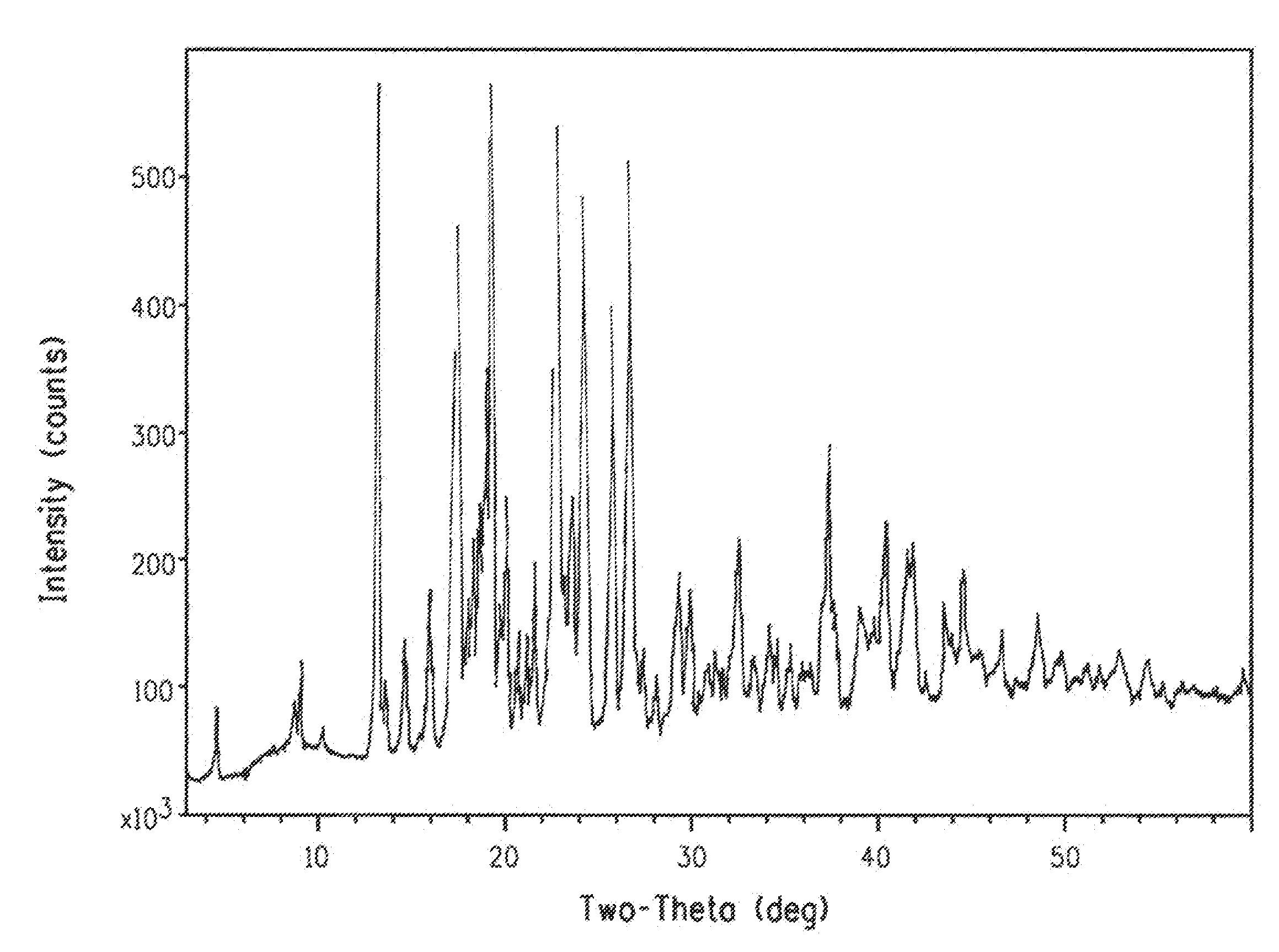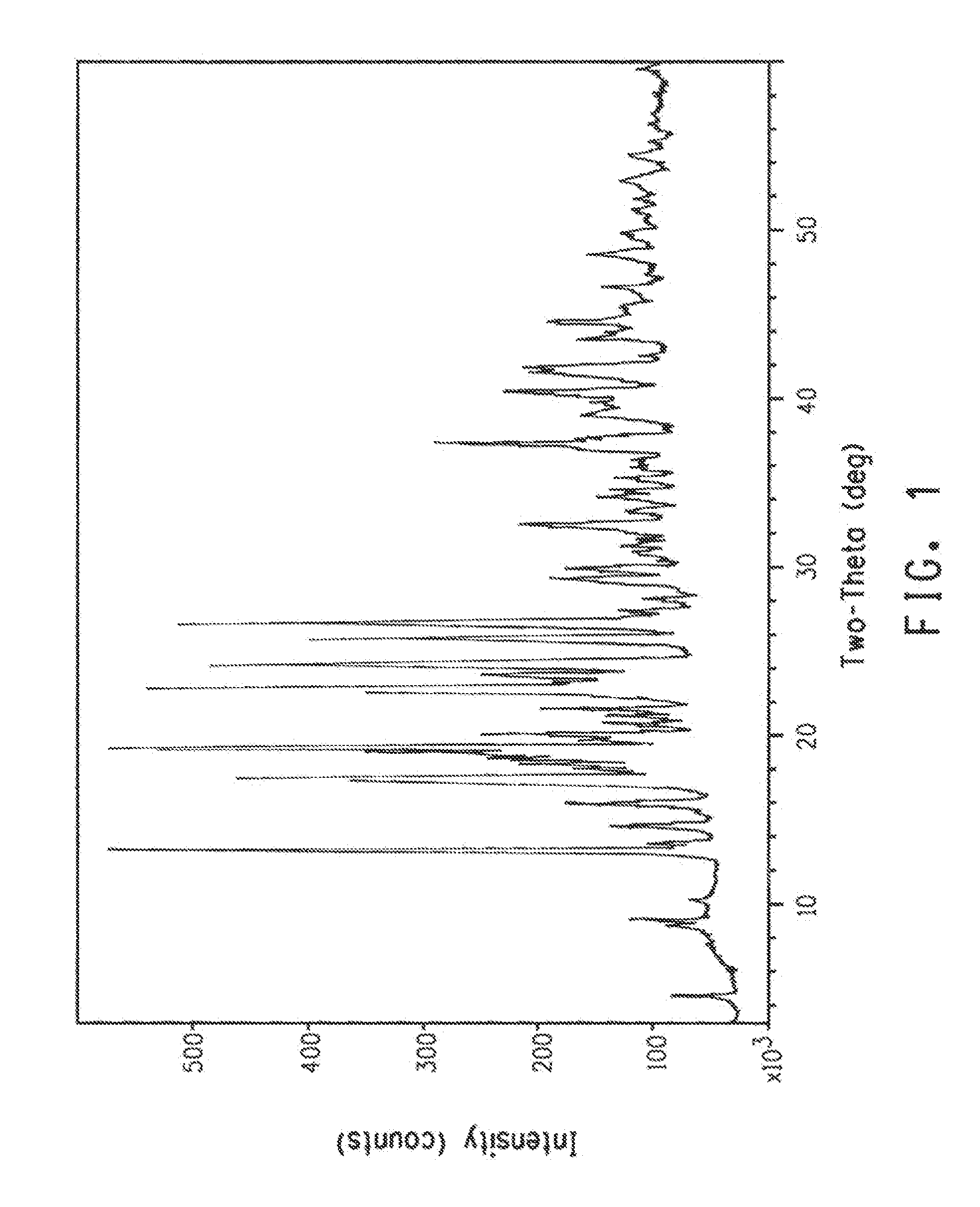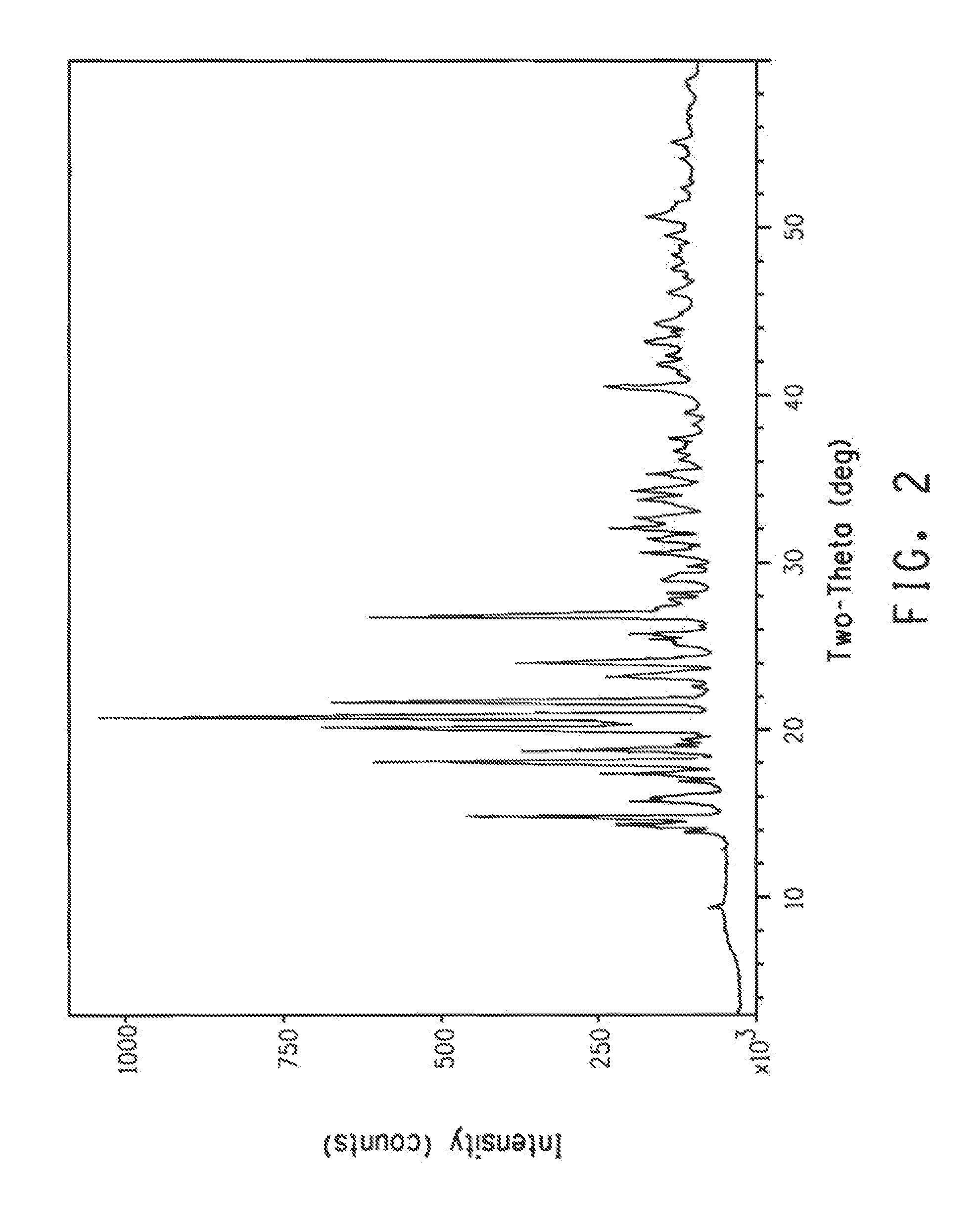Solid forms of an azocyclic amide
a technology of azocyclic amide and solid form, which is applied in the direction of heterocyclic compound active ingredients, phosphorous compound active ingredients, biocide, etc., can solve the problems of inability to predict the melting point of crystal form or crystal form in which the solid state of a chemical compound can exist, and the inability to predict the possibility of more than one crystal form of the compound
- Summary
- Abstract
- Description
- Claims
- Application Information
AI Technical Summary
Problems solved by technology
Method used
Image
Examples
preparation example 1
Preparation of Polymorph a of Compound 1
[0161]To a stirred solution of 2-chloro-1-[4,5-dihydro-5-(2,6-difluorophenyl)-3-isoxazolyl]ethanone (obtained following a procedure similar to Example 7, Step C in PCT Patent Publication WO 08 / 013,925) (2.64 g, 10.2 mmol) in acetone (64 mL) was added 1-[2-[5-methyl-3-(trifluoromethyl)-1H-pyrazol-1-yl]acetyl]-4-piperidinecarbothioamide (obtained following the procedure in Example 8, Step C in PCT Patent Publication WO 08 / 013,925) (3.40 g, 10.2 mmol) and sodium bromide (1.57 g, 15.3 mmol). The reaction mixture was refluxed for 3 hours, cooled to room temperature and then treated with solid sodium bicarbonate (0.92 g, 11.0 mmol) for 30 minutes. The mixture was concentrated, and the residue was partitioned between water and dichloromethane. The organic phase was separated, dried (MgSO4), filtered and concentrated to give the crude reaction product as an oil. The residue was purified by chromatography on silica gel (120 g) using 50-100% ethyl aceta...
preparation example 2
Another Preparation of Polymorph A of Compound 1
[0162]To a solution of 2-bromo-1-[4,5-dihydro-5-(2,6-difluorophenyl)-3-isoxazolyl]ethanone (obtained following a procedure similar to Example 12, Step E in PCT Patent Publication WO 08 / 013,925) (192 g, 0.63 mol) in methanol (500 mL) was added 1-[2-[5-methyl-3-(trifluoromethyl)-1-pyrazol-1-yl]acetyl]-4-piperidinecarbothioamide (obtained following the procedure in Example 8, Step C in PCT Patent Publication WO 08 / 013,925) (220 g, 0.66 mol), and the reaction mixture was mechanically stirred at room temperature under a nitrogen atmosphere. The solids gradually dissolved and the reaction mixture warmed to 42° C. The reaction mixture was heated to 48° C. for 1.5 h, and then the heat source was removed to allow the reaction mixture to cool. Methanol (1 L) was added to the reaction mixture, followed by dropwise addition of a solution of sodium acetate (54 g, 0.66 mol) in water (120 mL) and aqueous hydrogen peroxide (7 g of 35 wt %). The reacti...
preparation example 3
Original Preparation of Polymorph B from Polymorph A
[0163]A polythermal method was utilized to measure the solubility and metastable zone width (MSZW) of polymorph Form A. A LARA™ Controlled Laboratory Reactor with a turbidity probe was utilized to detect the disappearance of solids during dissolution trials and the beginning of crystallization during successive cooling experiments. A known amount of polymorph Form A (7.2 g or 5.4 g) was charged into a pre-cooled vessel containing 250 mL of methanol / water (3:1 by volume). The suspensions were continuously stirred at 400 rpm. Two heating profiles of warming from 5° C. to 60° C. and cooling from 60° C. to 5° C. at 0.40 and 0.75° C. / min were applied. Optical density changes detected by light transmittance were used to track the dissolution and crystallization of the material during this temperature cycling. Concentration adjustments were made by varying the amount of polymorph Form A added to a fixed volume of solvent.
[0164]Dissolution...
PUM
 Login to View More
Login to View More Abstract
Description
Claims
Application Information
 Login to View More
Login to View More - R&D
- Intellectual Property
- Life Sciences
- Materials
- Tech Scout
- Unparalleled Data Quality
- Higher Quality Content
- 60% Fewer Hallucinations
Browse by: Latest US Patents, China's latest patents, Technical Efficacy Thesaurus, Application Domain, Technology Topic, Popular Technical Reports.
© 2025 PatSnap. All rights reserved.Legal|Privacy policy|Modern Slavery Act Transparency Statement|Sitemap|About US| Contact US: help@patsnap.com



